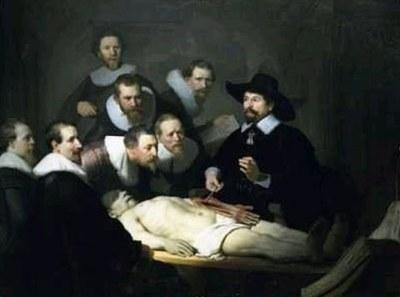(iv) Remaking the modern body, 1543-1939

The body is at once the source of our most personal and individual experiences, and one of the principal ways in which we display our membership of a particular culture located in time and space. The paradox of the body is to be both timeless—the universal constant which is common to every body throughout history—and profoundly historicised. This course addresses the transformations in knowing, representing and possessing the body over a period beginning with the Renaissance reform of anatomy by Vesalius and his successors, and ending with the eugenic and Utopian projects of the early twentieth century. En route, it explores the humoral body of early modern medicine; bodily monstrosity as a natural, political and scientific phenomenon; the invention of the 'normal' body in the modern age; the construction of race, gender and class as embodied characteristics; and political projects of physical culture and social hygiene. Past practices of inscribing and identifying the body are explored, as well as ways of depicting, viewing, training and regulating it.
How should we approach the history of the body? Historians who have written about the body have drawn upon a wide range of related disciplines: anthropology, sociology, philosophy, the histories of science, medicine and art, gender studies, sports and disability studies, queer theory and postmodernism. It is often those approaches which seem, on the face of it, to be the least concerned with the body as such which have generated the most fruitful and thought-provoking approaches to the body, and have allowed us to ‘get behind’ the apparently self-evident nature of the body as an historical object to reflections about symbolism, or about what underlies definitions of the ‘normal’, ‘healthy’, or ‘beautiful’ body. Whilst bodies are material, they are also very much creations of a particular historical or geographical culture. Conventions for describing, moulding and evaluating the body vary greatly in time and place; so too do conventions governing gesture and dress. Power is frequently displayed via the body, and the conventions for so doing are likewise highly mutable. During the course, we will explore some of these many roles that the body has possessed, and their significance. Should we speak of ‘the’ body or of bodies in the plural? What have been the historical consequences of asserting bodily standards and ideals to which individual bodies could aspire, or from which they differed? What are the boundaries between normality and abnormality, health and sickness, beauty and ugliness, power and weakness, and how have they been worked out in the past? And lastly, what is the relationship between the material reality of the body and its multiple symbolic roles?
This material is intended for current students but will be interesting to prospective students. It is indicative only.
